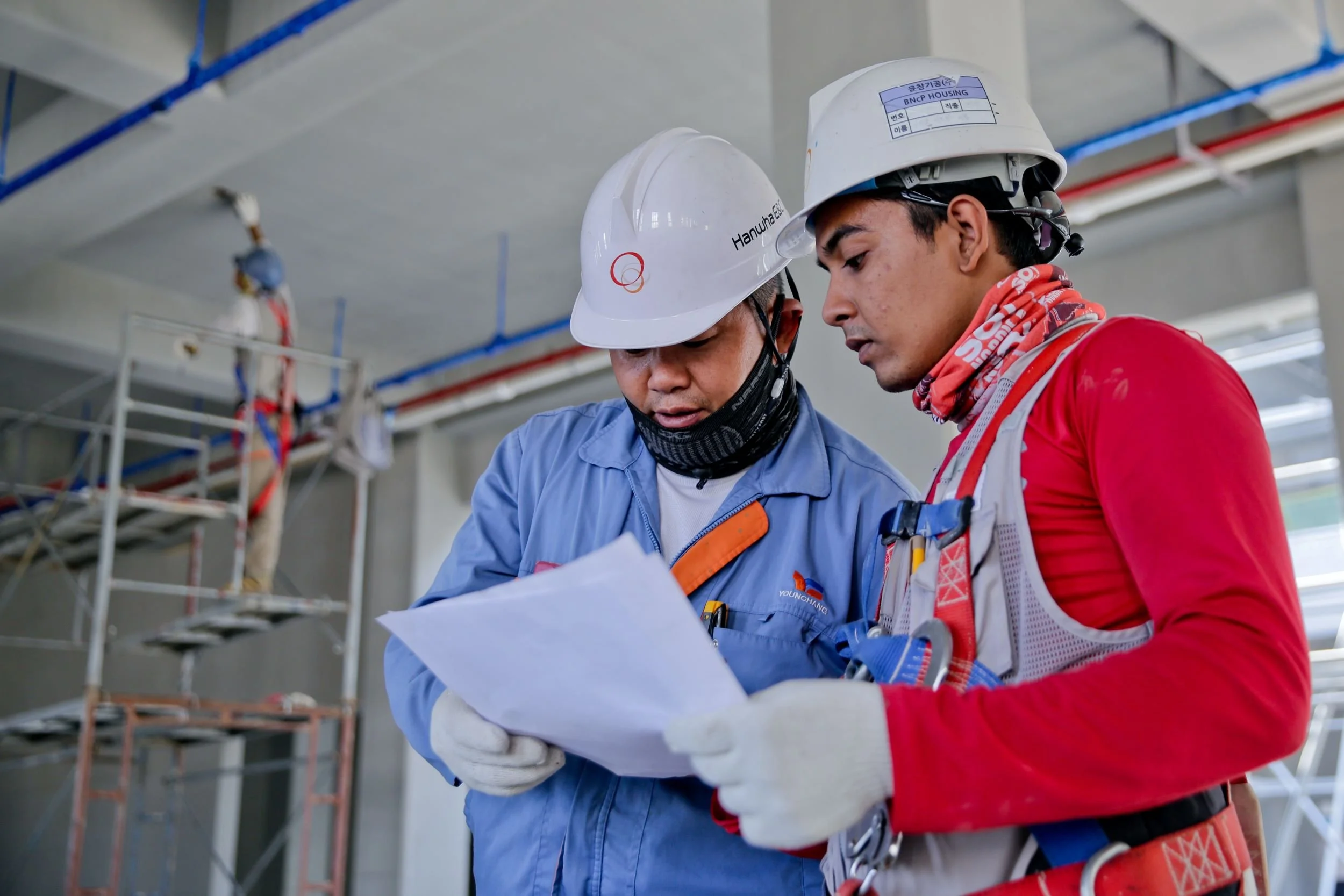How Employee Feedback Can Help You Create A Safer Environment
[Image description: Two workers in hard hats looking at papers while in a construction zone.]
In the realm of workplace safety, it's easy to overlook one of the most critical resources at your disposal – your employees' voices. Employee feedback provides invaluable insights into the unseen corners of your work environment, often shedding light on issues that might otherwise go unnoticed, such as discrimination, mismanagement, and workplace burnout. Creating an open culture where employees feel empowered to share their opinions and concerns paves the way for a healthier, safer work environment for everyone involved.
Employee Feedback and Workplace Safety: Understanding the Link
Employee feedback isn't just a tool for improving job satisfaction and productivity – it's also crucial for identifying and addressing safety concerns. When employees feel comfortable expressing their worries, managers can swiftly act on potential risks, preventing accidents before they occur. Take a glance at any successful organization, and you'll notice a common trend: they leverage employee feedback to enhance safety protocols and work towards a risk-free environment.
6 Strategies for Encouraging and Gathering Feedback from Employees
Collecting feedback from employees is crucial for ensuring workplace safety, but it often requires specific strategies to be truly effective. This isn't merely about seeking responses; it's about creating an environment where employees feel genuinely empowered to share their insights. So, what strategies can you employ to encourage this feedback and capture these invaluable insights?
Confidential Feedback Channels
Provide avenues where employees can express their concerns without fear of retribution. This can be as simple as anonymous suggestion boxes placed around the workplace or online platforms that maintain the anonymity of users. OSHA says 70% of accidents are caused by human error - and often go unreported because of fear of retribution.
A Journey of Applied Behavioral Analysis article stated that “Results showed that feedback was consistently followed by improvements in safe performance.”Regular Feedback Sessions
Designate specific times for team members to share their thoughts about workplace safety. These could take the form of weekly meetings, monthly round-table discussions, or even daily huddles where safety concerns are a regular topic.
Open Door Policies
Encourage higher-ups to maintain an approachable persona. Employees should feel that they can voice their concerns directly to management without fear of repercussions. This includes being open to impromptu conversations, actively listening, and showing empathy. According to a TINYPulse survey of over 10k employees, 88% of employees believe that their feedback is not taken seriously.
Digital Feedback Tools
Leverage technology to make giving feedback more comfortable and more convenient. Online surveys, feedback apps, and digital platforms can all facilitate employee feedback, particularly in a remote working environment.
Recognition for Feedback
Create a positive reinforcement system by acknowledging and appreciating the feedback given by employees. This doesn’t mean you have to implement every suggestion but show that every piece of feedback is taken into account and appreciated. 69% of employees have said if they felt appreciated that they would work harder.
Feedback Training
Invest in training programs to help employees articulate their concerns more effectively. This can help them provide more constructive feedback, making it easier for you to act on their insights.
Incorporating these strategies into your feedback collection process will not only encourage employees to voice their opinions more freely but also provide you with a wealth of insights to help improve workplace safety.
Transform Words into Action
Turning feedback into action is important for improving workplace safety. Managers have to navigate this process carefully, from identifying priorities to designing custom solutions and continually evaluating their effectiveness.
Prioritizing safety concerns is crucial - not all issues can be addressed simultaneously, and some may pose more immediate risks than others. Once these urgent issues are identified, the next step is to devise targeted safety measures. This could mean updating protocols, providing additional training, or investing in safer equipment.
The job doesn't end with implementation, though. Managers need to regularly monitor the efficacy of these changes. Tools like audits and follow-up surveys can provide insightful data for this purpose. Furthermore, transparently communicating these changes and their impacts back to the team can encourage future participation and foster a culture of continuous improvement.
A study by the University of Maryland noted that “Employees who feel like their feedback is valued are more likely to be engaged in safety efforts.” The study found that employees who feel like their feedback is valued are more likely to report hazards, follow safety procedures, and participate in safety training.
In essence, creating a safer work environment is a dynamic, ongoing process that starts with listening and ends with action, only to loop back again for constant evolution and improvement.
Cultivate a Sustainable Culture of Safety Through Employee Feedback
The process of collecting and implementing feedback should be seen as a continuous loop, not a one-time event. By keeping the conversation going, managers can ensure safety measures are continuously updated to meet current needs. By involving employees in the process, you make them stakeholders in safety, leading to a more engaged, aware, and proactive workforce. Over time, this continual improvement and commitment to safety based on feedback can help cultivate a sustainable culture of safety. An American Productivity & Quality Center study notes that companies that implement employee suggestions can save an average of $12,000 per year.
The Empowering Effect of Employee Feedback on Safety
Looking back at our exploration, it becomes clear how critical employee feedback is in shaping a safe work environment. It empowers employees, assists management in preempting risks, and encourages a continuous commitment to a safer workplace. As we look to the future, the potential for further enhancing workplace safety through feedback is vast and exciting.
This is where platforms like The Rise Journey come into play. As a well-established company specializing in organizational development, we can guide businesses in optimizing their feedback process and effectively implementing changes based on that feedback. Their expert team brings years of experience and a deep understanding of how to cultivate a culture that values employee voices, making them an excellent partner for any organization striving to enhance its workplace safety.
We encourage you, then, to take these insights and put them into action. Listen to your employees, act on their concerns, and foster an environment where safety is a shared responsibility. Book a chat today to see how we can help your organization.



